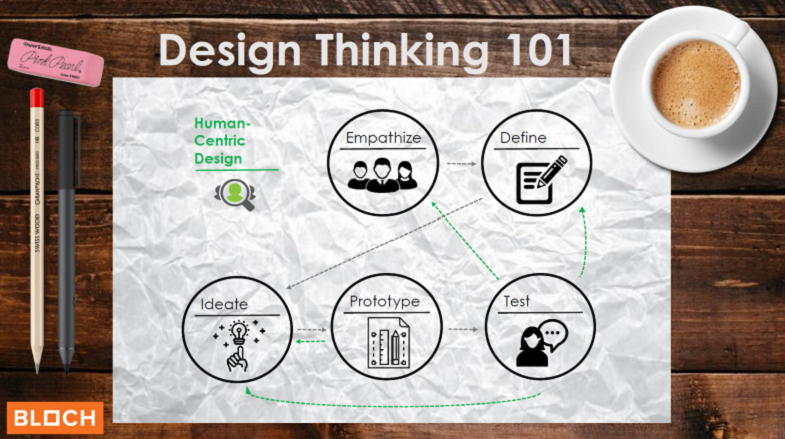The arrival of new ideas is met with excited early adopters and skeptical detractors. In a space like phone apps or a new basketball shoe, these may be trivial battles best left to market sorting. However, when new ideas are proclaimed to be opportunities for new ways of thinking about and executing business we must listen carefully to the skeptic and temper the excitement of early adopters. It is with this mindset I have found myself thinking about design thinking and its applications for management practice.
Taking my own advice, I sought out criticisms of design thinking to better understand its place in a business’s problem solving tool box. The truth is, there is a dearth of quality writing on design thinking. In one of the more substantive critical pieces, Natasha Iskander argues in a 2018 HBR article, design thinking is not new, preserves the status quo, and is unsuited for uncertainty. If true, these would seemingly render design thinking impotent. Other research has posited innovation through design thinking suffers from the same organizational barriers other innovation approaches encounter. 1 Chief among these are culture, implementation, and threats to power dynamics.
Are these criticisms fair? Is design thinking just a restatement of what we already do? Even if it is novel, does it run into the same barriers as other innovation processes? It appears that the answer is both yes and no. All of the criticisms levied against design thinking are true if you utilize design thinking as process, ignoring the deeper value of the approach.
The real value of design thinking, backed by research (here and here), is in the thinking it promotes. We generally employ a combination of deductive (top down logic) and inductive (bottom up logic) reasoning to solve problems. Design thinking utilizes a third type of reasoning, abductive. Abductive reasoning resembles “satisficing”, the decision-making approach described by Nobel Prize winning economist Herbert Simon. Abductive reasoning starts with observations, like inductive, but looks for only enough information to solve a problem not understand an entire phenomenon – like you would with indictive reasoning in theory development.
Because design thinking is not merely a different process, but instead a different way of reasoning, its application in business is uniquely situated for times of uncertainty that demand more rapid decision making. Below are three business challenges where design thinking and its abductive reasoning strategy allows for successful innovation.
Attracting new customer segments: Business looking to expand to currently unserved populations confront an asymmetry of information. They can know who they are not serving (at least demographically) but not what motivates this group. Data on current customers will help, minimizing deductive problem-solving approaches. Bank of America – Keep The Change, experienced this very problem. BOA wanted to encourage savings in populations that traditionally did not save. To solve the problem, they studied the pain points of non-savers. Through this process, they found many in this population would round up while balancing check books. This created an opportunity! The Keep the Change program was built on an existing behavior of a population the bank wanted to serve. When making purchases with a debit card, BOA would automatically round up to the nearest dollar, depositing the rounded amount into a savings account. Since its inception, Keep the Change has grown to more than 12 million people.
Better Process for Lower Costs: Data science allows decision-making to achieve a higher level of precision. However, there are times when the analysis identifies a process failure but can not provide a new solution. When a process failure calls for a new way of engaging a customer, design thinking can quickly identify and provide a solution that remedies the process and improves the financial bottom line. This is the case of MRI machines in Children’s Hospitals. An MRI scan is daunting for most people, but for children the experience can be traumatic. Walk into an imagery room, you will typically find a sterile environment. For kids and their parents, this setting only intensifies existing anxieties. Anxious kids delay entering the room, delay getting on the table, and do not hold still in the machine. All of these delays cost the hospital money (particularly if the child moves in the machine, which can lead to a second MRI). To solve this process problem, GE developed the adventure series. Kids were no longer going to enter an MRI, they would participate in an adventure that begins when the arrive at the hospital and ends in a machine shaped like a tent or ship or other fun theme. Delays were averted, hospitals saved money, and most importantly, child anxiety was mitigated.
Developing a Brand Identity: Launching a new product or service line forces a company into the unknown. Confronted with this opportunity, businesses wrestle with the value they will communicate to customers. Brand is not a logo, but instead a statement of your value proposition and the basis for building customer loyalty. Again the work of business analytics can identify prosperous customer segments. Once identified, design thinking can uncover the customer motivators that will ensure a fruitful entry into the market. Think about the “sneakerhead” community and Nike. Twenty-five years ago, Nike was the pinnacle of athletic performance equipment. The biggest stars of sports, Michael Jordan and Tiger Woods, were Nike athletes. This continues today with Lebron James and others. But what about Nike the fashion brand? That’s right Nike is not just about athletic apparel, they are also about fashion. Recognizing their shoes were fashion accessories for a segment of consumers affectionately called “sneakerheads”, Nike made the strategic decision to delve into fashion. They sought partnerships with fashion designers passionate about the brand. But most importantly they sought to better understand the “sneakerheads”. In the process, they found that Nike fashion was not just about the product, it was about creating shoes that told a story about culture and history.
Do challenges still exist when implementing design thinking in your organization? Of course! Ultimately, for innovation to flourish there needs to be buy-in from the top. The culture of a business will always dictate the ability to adapt and change. If approached willingly, design thinking can help businesses grow customer segments, stay relevant, and create brand loyalty.
Is there a space for design thinking in today’s business toolbox? Absolutely, and that space sits at the intersection of your known frontier and the uncertainty that lies on the other side.
1 Carlgren, L., Elmquist, M., and Rauth, I. ( 2016) The Challenges of Using Design Thinking in Industry – Experiences from Five Large Firms. Creativity and Innovation Management, 25: 344– 362. doi: 10.1111/caim.12176.

